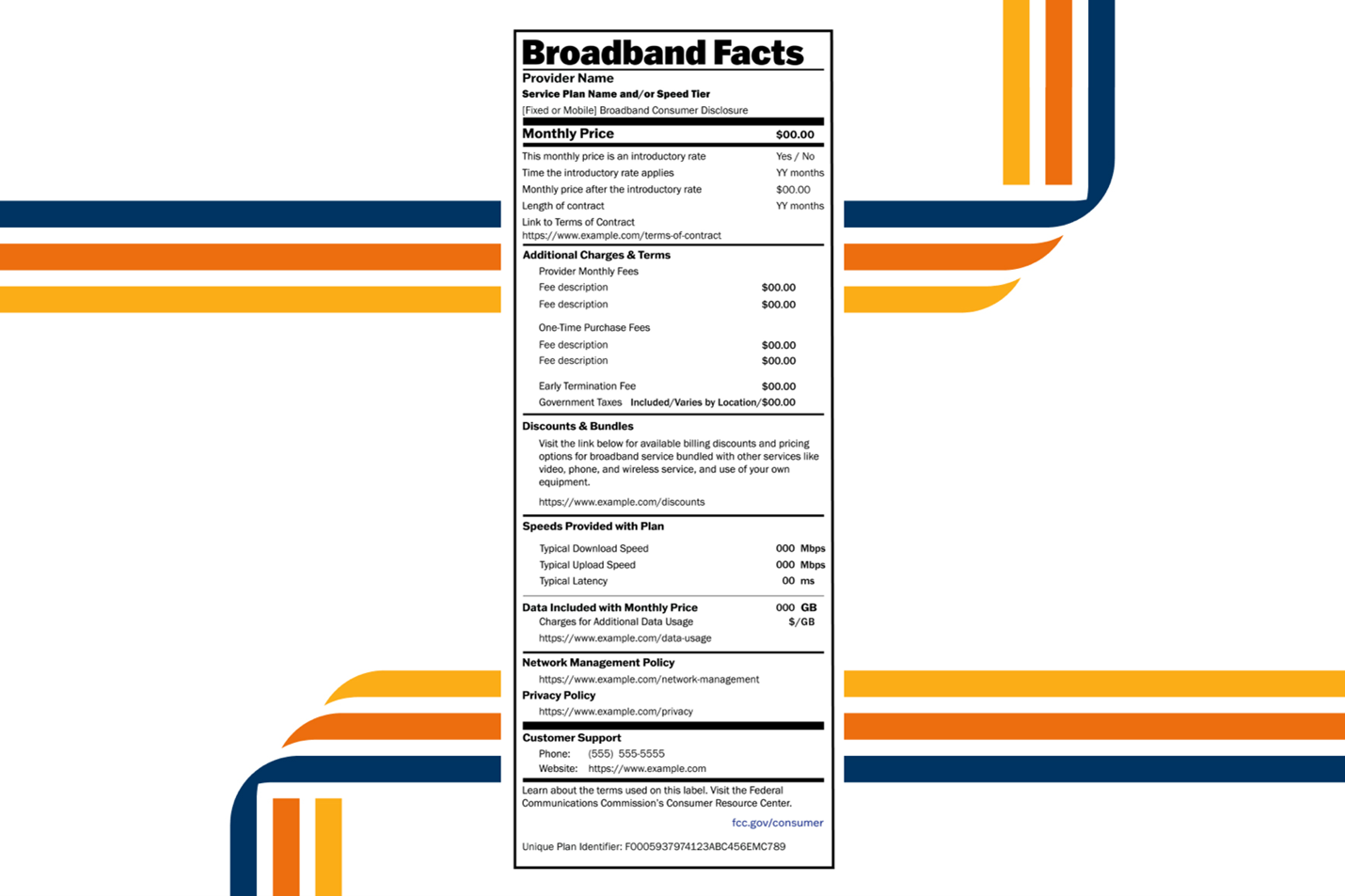
Understanding Broadband Nutrition Labels and Consumer Facts
Broadband Internet Nutrition Label: What Does It Mean?
When you look at the back of a food product, you’ll spy a black-and-white label that explains all its nutritional value: carbs, calories, and other contents. These food labels are pretty handy for helping us make smart food choices, which is why the FCC decided to do something similar with broadband Internet nutrition labels.
You might have already started seeing these labels pop up on broadband providers’ websites or in retail stores. Let’s look closer at these descriptive labels and explore what they offer for consumers like you.
What are broadband nutrition labels?
Just like their food counterparts, broadband nutrition labels are detailed overviews of what's included in a given broadband Internet plan. As part of the Infrastructure, Investment, and Jobs Act, the Federal Communications Commission (FCC) has mandated that Internet service providers or “ISPs” must now present critical, relevant information about their service offerings to potential customers.
Think of broadband nutrition labels as the key facts or info about a plan you might want to know about before you sign up for it. In theory, these Internet nutrition labels will make it easier for broadband consumers to choose the right plans for their needs.
Decoding an Internet broadband fact sheet
Each Internet broadband nutrition label includes a collection of essential information about an Internet plan. When you look at one of these fact sheets, you'll find:
- The monthly price for the Internet offering plus any possible price increases that might apply in the future.
- Extra charges or fees that are associated with the Internet plan, like equipment fees or installation fees.
- Discounts and bundles that might apply to a particular plan.
- The average estimated speed of the Internet planning question. Even better, you'll find the Internet speed broken down further into download speed, upload speed, and latency.
- Data caps or how much data is included with the plan before you potentially face extra charges.
- Additional legal information like network management and privacy policies, as well as customer support information.
In total, an Internet plan’s nutrition label should be everything you need to come to an informed decision about whether that plan is a great choice for your household and your budget.
The benefits of Internet nutrition labels
According to the FCC, requiring ISPs to provide broadband nutrition labels will result in several immediate benefits for consumers and the market overall:
- To enhance transparency in the Internet plan selection process. Consumers shouldn’t feel fooled or like they don’t know what they’re getting into when they sign up for a broadband plan.
- To ensure fair competition between Internet services. ISPs can't obfuscate the less-ideal aspects of their plans.
- To empower consumers in their choices. With Internet nutrition labels, consumers can truly choose the ideal broadband for their unique needs.
When do Internet providers need to provide broadband labels?
The new Act requires all ISPs to provide Internet fact sheets or nutrition labels with their offerings, but not every provider has to implement these required labels at the same time. Internet providers have different compliance deadlines based on their sizes.
Larger ISPs with over 100,000 subscribers had to comply with the new regulations by April 10th, 2024. Meanwhile, smaller ISPs with fewer than 100,000 subscribers have to be in full compliance by October 10th, 2024.
For you, that means every ISP, regardless of size, should offer Internet nutrition labels at any point of sale by the end of October at the latest.
Where you’ll find these labels
Broadband Internet nutrition labels are extremely helpful, but only if you can find them. Luckily, the FCC has also mandated that ISPs place those labels in a variety of different spots, such as:
- On their websites. When you visit an ISP’s website, you should see the Internet nutrition label for a given broadband plan on the web page with all of its other details. But remember, you may need to visit a specific plan’s dedicated page to see the fact sheet!
- In retail stores. Broadband Internet nutrition labels should be visible in physical retail locations where broadband plans are sold to customers.
- Over the phone. Say you want to sign up for a broadband plan over the phone. Thanks to the Infrastructure, Investment, and Jobs Act, you can request to have that plan’s nutrition label read to you over the phone so you know exactly what's included.
Internet service providers can limit consumers’ access to broadband nutrition labels to those available at the service address they request. In other words, you might not be able to see every label for every plan available to every service area within the ISPs network. However, you will be able to see the label for all plans that are currently available at your address.
The FCC’s priority is for labels to be available to new customers, though labels for existing customers on preexisting plans will eventually be mandatory.
Be on the lookout for broadband fact labels from Shentel!
All in all, broadband nutrition labels are a net benefit for the market and for Internet consumers. At Shentel, we pride ourselves on transparency and integrity, and we’re excited to offer broadband fact sheets for each of our home Internet plans in the near future.
In the meantime, you can check out our open Internet disclosure page to see our average speeds and learn more about the best-in-class Internet we provide to households in your area! Get in touch today to learn more.